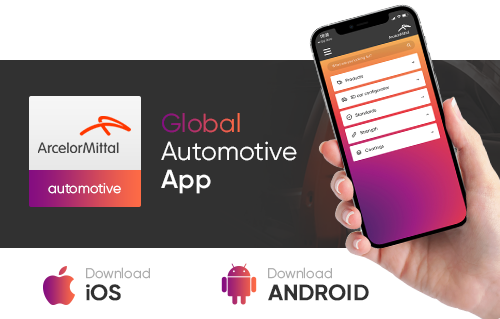Products
Product pages available in
EN - DE - FR - ES
Sustainability
News, events and stories
Laser welded blanks
Laser welded blanks (LWBs) are an innovative way for automakers to reduce the weight of their vehicles while improving safety at the same time.
They allow OEMs to combine different steel grades into one single part to ensure the right steel is in the right place for safety and performance.
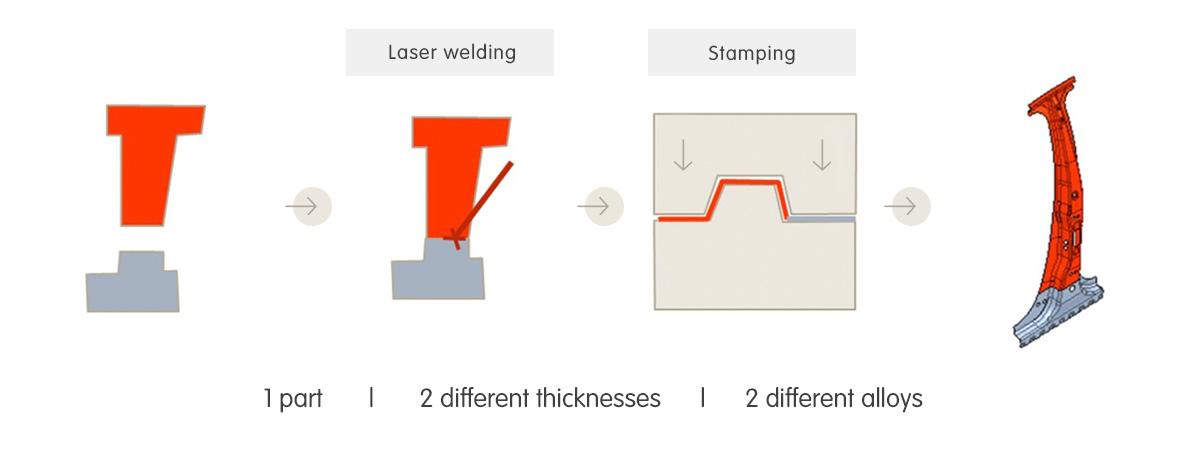
As well as different grades, the LWB can include steels with different coatings and thicknesses to optimize the part. In this way, strength can be concentrated where it is most needed for crash resistance while more ductile steels can be used in the same part to control deformation. As a result, overall material thickness is reduced, decreasing weight and emissions. Manufacturing, material, and transport costs are also reduced significantly.
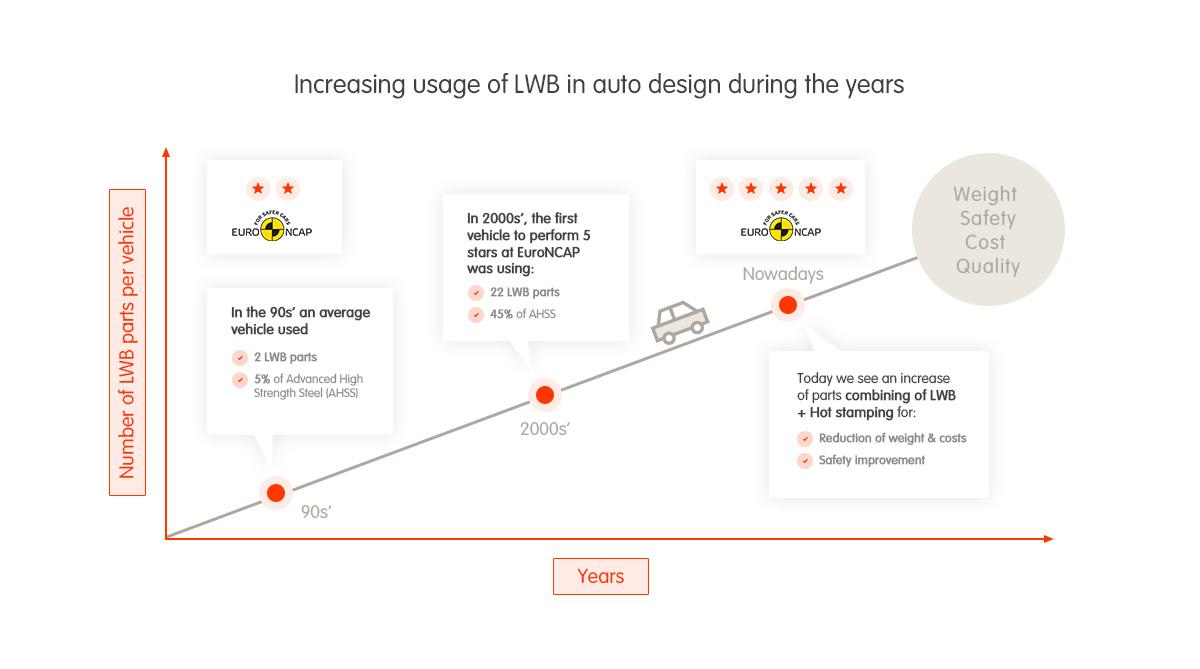
The use of laser welded blanks has increased dramatically since they were first introduced in the 1990s
Using hot stamping steel such as Usibor® and Ductibor®, or cold stamping steels such as Fortiform®, ArcelorMittal’s Tailored Blanks division can help OEMs to achieve additional reductions in vehicle weight at an affordable cost while maintaining or enhancing safety performance.

Laser welded blanks offer an interesting compromise between mass and cost reduction, and improved technical performance
What are laser welded blanks?
A laser welded blank (LWB – also known as a tailored blank) is a sheet of steel which combines several different grades. Each grade can have different thicknesses and/or coatings. LWBs allow a part to be engineered for optimal performance and lightweighting.
The separate grades are laser welded together to create a single sheet of steel which has the best grade in the best place for strength and deformation. Each sheet can be hot- or cold-stamped to give the part its final shape.
The result is a ‘tailor-made’ solution with significant advantages for the customer. Today, LWBs are commonly used in automotive construction, particularly for the body-in-white and closures of a car.
Basic types of laser welded blank
Laser welded blanks (LWBs) can have a simple geometry with linear welds or a complex shape with non-linear welds. They can be used for automotive body parts such as:
- Rails
- Floor and floor cross members
- Body sides and inners
- A-, B-, and C-pillars
- Inside of rear and front wheelhouse fenders
- Dash panels
They can also be used for closures such as:
- Door inners
- Hood inners
- Tail gates
-
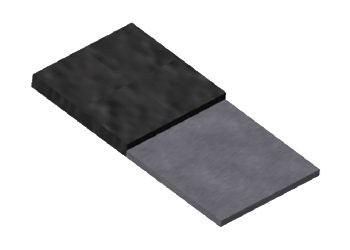
Butt-welded LWB
-
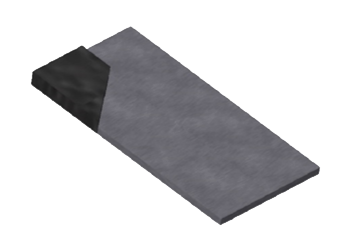
Bi-linear LWB
-
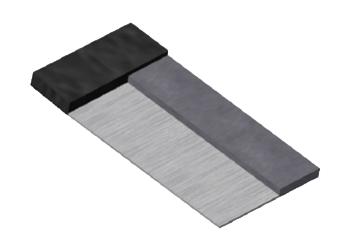
Multi-linear LWB
-
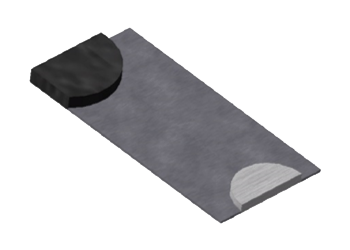
Curvi-linear
Various laser welded blanks topologies are possible.


